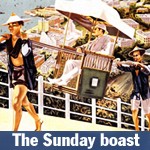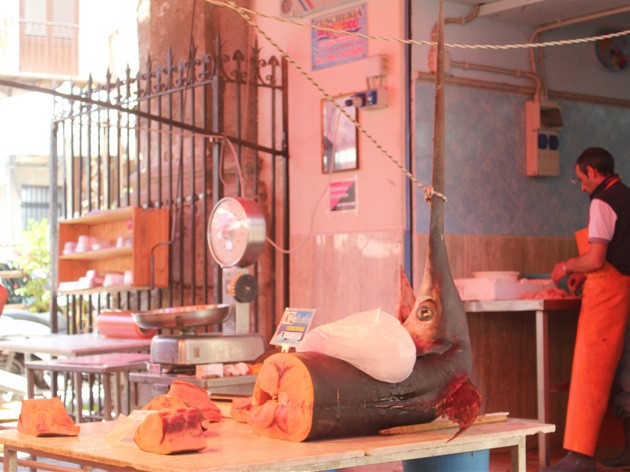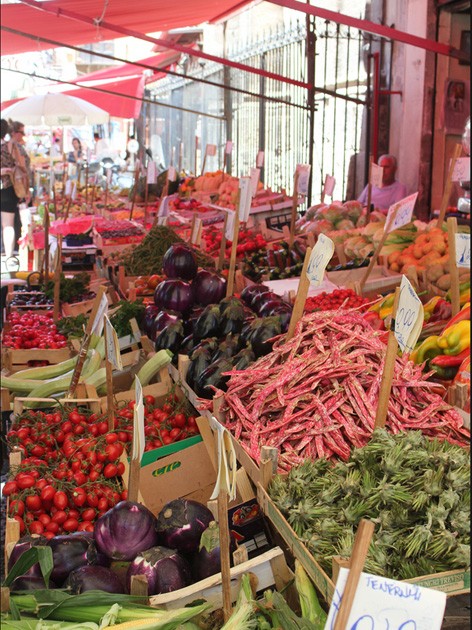 The Sicilian city of Palermo is an astonishing 2,700 years old, originally settled by ancient Phoenicians. In its long history Palermo has been ruled by the Romans, Byzantines, Arabs, and Normans before Italian unification in 1860, and the jumble of influences repeatedly appear throughout Sicilian culture, especially in the island’s wonderful food.
The Sicilian city of Palermo is an astonishing 2,700 years old, originally settled by ancient Phoenicians. In its long history Palermo has been ruled by the Romans, Byzantines, Arabs, and Normans before Italian unification in 1860, and the jumble of influences repeatedly appear throughout Sicilian culture, especially in the island’s wonderful food.
Palermo was bombed heavily in WWII after the Allied invasion of Sicily in 1943, and the post-war period was not a bright one for the city either. Mafia-sponsored development saw cheap housing sprawl northwards without any infrastructure to support it — known as the Sack of Palermo — while the old city remained devastated by the war.

Today the city centre is dotted with ruins; shells of graffiti-covered buildings overlooking derelict piazzas and over-flowing skips. Some old buildings remain of course, including the imposing Teatro Massimo, which opened in 1897. Life buzzes on regardless of the city’s battle scars, as evidenced by the clean laundry hanging from exposed beams of shelled buildings.

Street markets wind through the city, selling cheap hats and sunglasses, tea towels and every piece of plastic junk ever made. More promising are the fresh produce markets. The fruit and veg are a vivid array of summer colours and the peaches and aubergines are nothing short of luscious.

Seafood vendors truss up swordfish by their formidable bills; you can find too fresh meat and hunks of cheese and hawkers selling Sicilian snacks like fresh fried octopus and (less appealing) spleen sandwiches. Sicily is of course famed for its food. The layered cake cassata and cream-filled cannoli are world famous; people even salivate over fictitious dishes such as timballo (‘monumental’ macaroni pies) from the Sicilian classic The Leopard. Sardines are a staple, and Sicily supplies citrus to the whole of Europe.
We ate well in Palermo; fried fresh seafood by the beach, perhaps the best tomatoes I’ve tasted bought from the local market, gelato served in brioche, and a well-executed dinner at Sant’andrea Restaurant in a piazza of the same name. For the sake of balance I should add that I ate one of the most unpalatable meals I’ve been served at one Palermo restaurant — certainly some sort of achievement. It was a salad of raw citrus (read lemon) and smoked herring and it was not for me.

What truly makes this island a foodie’s cornucopia is the wine; some marvellous innovation makes it infinitely drinkable without the deleterious effects of a hangover, surely the best thing ever.
All the wandering, eating and drinking necessitated some beach time, so we caught an open-air bus to Mondello, about a half hour trip (not the three hours we were told by a spruiking cab driver) and free too thanks to a kind family of four who gave us their tickets.

The beach is a great reminder that you’re not in Australia anymore; thousands of people, oiled and prostrate, cram the thin strip of sand between the water and the umbrellas and deck chairs (where you can shade yourself for a fee).
So sunned, stuffed and a little pickled, it’s back to London’s stalled summer — and planning the next sun-chasing break.







Crikey is committed to hosting lively discussions. Help us keep the conversation useful, interesting and welcoming. We aim to publish comments quickly in the interest of promoting robust conversation, but we’re a small team and we deploy filters to protect against legal risk. Occasionally your comment may be held up while we review, but we’re working as fast as we can to keep the conversation rolling.
The Crikey comment section is members-only content. Please subscribe to leave a comment.
The Crikey comment section is members-only content. Please login to leave a comment.